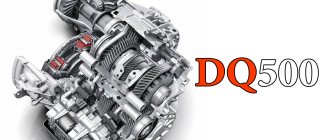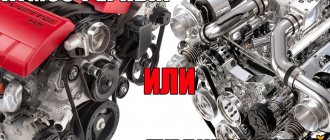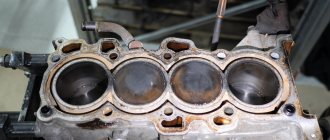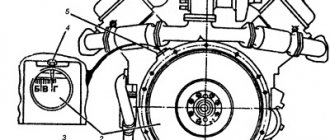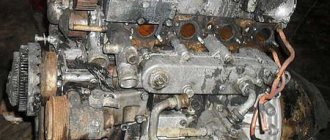Despite the fact that every mechanism in a car is important, the engine remains the main one. Without it, the machine is just a small, motionless room. Leading automakers are constantly competing in powertrain performance. So that the engine is powerful, consumes little fuel and breaks down as rarely as possible. That is, the issue of wear resistance is one of the most important, which internal combustion engine engineers are currently addressing. And the leadership in this problem has belonged to the Japanese automaker Toyota for many years now. Some of their engines are still the most reliable.
The most reliable Toyota engine
Auto giant Toyota Motor Corporation has long established itself as a manufacturer of the longest-lasting power units. Some units are capable of traveling more than a million kilometers, subject to timely oil changes and technical inspection.
The company's engineers are constantly updating their designs. Dozens of engine modifications have already been released in pursuit of the perfect model. Of course, in such a set, not every motor lived up to the brand’s established reputation. But there are also real diamonds that car owners and experts admire to this day.
When testing internal combustion engines, the following characteristics were taken into account:
- mileage without major repairs;
- ease of maintenance and maintainability;
- final power;
- possibility of modernization and improvement.
All considered indicators were taken into account when properly servicing the machine. If you do not take care of the vehicle, then even the most advanced unit will sooner or later completely fail.
Article Which Toyota is the most indestructible in the world according to experts
1JZ-GE
The 1JZ-GE engine has already become a legend. Toyota Corporation developed this power unit in 1990. In the JZ line, the engine became a pioneer. Its technology is used not only in ordinary passenger vehicles, but also in racing cars.
This is a reliable unit, the new generation of which always incorporates the entire range of modern trends and innovative developments. In turn, the device has a high level of power, but at the same time is easy to operate and maintain. Initially, 1JZ-GE was installed on the following Toyota models:
- Mark II;
- Cresta;
- Crown;
- Chaser;
- Progress.
1JZ-GE is a 2.5-liter 24-valve internal combustion engine. Power up to 200 horsepower. The motor had two generations. Initially, trombler ignition was installed. The updated version was already equipped with ignition coils and a valve timing system of VVT-i technology.
The new timing system made it possible to increase the power of the power plant by 10%, while reducing the amount of harmful emissions into the atmosphere. The first version was installed on cars from 1990 to 1996, the second - from 1996 to 2007.
The installation works on both AI92 and AI95 gasoline. The AI98 series fuel combines much worse and is already causing problems, even despite the increase in performance. The car starts to have trouble starting. With timely technical inspection and carrying out the necessary work to replace consumables, the first major repair may be needed only after 400-500 thousand kilometers. On average, consumption in mixed mode is about 11 liters per 100 kilometers.
IMPORTANT INFORMATION! The 1JZ-GE engine is unstable in cold weather, so it is rarely used in areas with harsh climatic conditions. Consumes quite a lot of oil. Most often the VVT-i system fails.
2JZ-GTE
No less popular than its predecessor is the 2JZ-GTE engine. Among Toyota models, this is the most productive and powerful engine. Its design includes 2 turbines with intercoolers. The unit itself is a 6-cylinder with a direct arrangement and two camshafts. The short block of the installation is made of cast iron alloy, the cylinder head is made of aluminum.
The 2JZ-GTE was produced only in Japan from 1991 to 2002. It first appeared on the Toyota Arista V model, but was later installed in the Toyota Supra RZ.
The power of the unit reached 321 horsepower. Engine capacity 3 liters. It can travel 400 thousand kilometers without problems. Under special conditions of proper maintenance, up to 600 thousand kilometers.
1UZ-FE
Among the reliable devices under the hood, the 1UZ-FE model stands out. It was installed in the following Toyota vehicles:
- Celsior;
- Crown;
- Aristo;
- Soarer;
- Lexus.
This power unit is an improved model of the other two engines described above. First of all, engineers sought to reduce the weight of the internal combustion engine, and in this generation they succeeded. In addition, 1UZ-FE surpasses its predecessors in almost all respects.
1UZ-FE was modernized twice. Therefore, specifications may differ slightly in different machines. However, it is an 8-cylinder engine and produces 256-290 horsepower. In normal mode, it can travel up to half a million kilometers without major repairs.
The only problem with installation is the attachments. Its service life is shorter than that of the engine as a whole, so it breaks down more often and faster.
3S-GTE
The 3S-GTE turbocharged engine, developed in 1990, showed the most promising prospects in the automotive industry. This model is a branch of the 3S-GE series. They have similar advantages. However, the updated version has eliminated the previous shortcomings. Such engines were installed until 1999 on the Celica and MR-2, and until 2007 on the Caldina.
The internal combustion engine had a cast-iron short block, familiar to Toyota, in which the pistons move. The timing head is traditionally made of aluminum alloy. This technology was invented by a Yamaha engineer. Today, such engines are no longer produced; only cars with them still travel not only on Russian roads.
The 3S-GTE series had 4 generations. Initially, the engine turned out to be not entirely successful. As the manufacturers later admitted, the 8-valve system was to blame. When the developers installed 16 valves and began trying to equip the engine with turbocharging, the technical and dynamic characteristics improved significantly. A 2-liter internal combustion engine has a power of 225-260 horsepower and consumes about 9 liters per 100 kilometers.
2ZZ-GE
2ZZ-GE is perhaps the most reliable engine in Toyota cars. In the early 2000s, the installation became most widespread. Engine power varied from 169 to 240 horsepower. But, despite the relatively high power in household engines, fuel consumption was extremely small. This power unit was installed on the following machines:
- Celica;
- Corolla;
- Lotus Elise.
In the USA and native Japan, everyone admired the engine. However, it received controversial reviews in Europe. As it turned out, opinions were divided due to the effect of oil and fuel on moving parts. Overseas, it is common practice to fill the tank with AI98 gasoline. In Europe, only the rich can afford this. In order for 2ZZ-GE to travel at least half a million kilometers, it must be fed with at least AI95.
However, not everything is so smooth with the internal combustion engine. And the demands on fuel are not limited here. Over time, piston rings can stick. This contributes to a significant increase in engine oil consumption. In addition, the engine is quite noisy. There is a knocking noise from time to time. But it can be eliminated by replacing the timing chain.
ADDITIONALLY! Engine operation can be extended by at least 50 thousand kilometers. To do this, it is necessary to change the lift bolts of the gas distribution mechanism. They are located in front of the camshafts under the cylinder head cover.
There is no point in tuning this engine. According to engineers, 2ZZ-GE is the maximum that can be achieved from this type of internal combustion engine. However, some craftsmen do chip tuning and install another turbine equipped with a compressor.
The best engines of the first wave
The peak of Toyota's production of the most productive engines was between 1990 and 2010. Motors of this period were most often subject to criticism, discussion, review and controversy. In addition, the company itself actively collected reviews about its products from car owners, experts and car repair specialists.
However, the development of Toyota motor technology is usually divided into several waves. And here the story begins much earlier.
The first wave occurred from 1970 to the early 1980s. Nowadays, such engines of the R, V, M, T, Y, K, A and S series can only be found among collectors, in a landfill or in a museum.
However, the engines of the first wave were already striking in their unpretentiousness and durability. Series A and S engines were installed in popular cars such as Corolla/Sprinter 90-110, Corona/Carina/Caldina 170-210.
The best engines of the second wave
The second wave of Toyota engines occurred in the late 1980s and early 2000s. This line includes classic units of the A and S series (later versions), as well as G and JZ.
The most popular is the 4A-FE, which was in use from 1988 to 2001. This version was loved by consumers the most. The model is jokingly called “folk”. The internal combustion engine is very easy to maintain and can be easily repaired. But similar installations were characterized by rapid wear of the connecting rod bearings. In addition, there were not enough floating piston pins.
From 1988 to 2005, in parallel with 4A-FE, version 5A-FE was produced. This is a basic model that was made not only in the Land of the Rising Sun. For cars in Southeast Asia, the units were made at a Chinese factory.
In 1994, a reinforced modification 7A-FE appeared. But it was released only until 2002.
Indestructible motor for the 2AR-FE crossover
The last engine we will talk about today is another representative of the Toyota segment, which in its operation can give a head start to anyone. This is the 2AR-FE line, which was installed on the Toyota RAV4 and Alphard. We know it best from the RAV 4 crossover with its incredible operating capabilities. The engine is made of high quality and can offer its owners simply amazing operating advantages:
- with a volume of 2.5 liters, this gasoline unit is enough for 179 horsepower and an incredible 233 Nm of torque, the characteristics are suitable for a crossover;
- cars with such settings are completely unpretentious when it comes to gasoline, there is no need to look for the best fuel, you can even fill with 92 gasoline without a twinge of conscience;
- a chain on the timing system eliminates problems with valves; its replacement is necessary once every 200,000 kilometers, but the engine life goes far beyond 1,000,000 kilometers;
- there are great benefits to operating vehicles in terms of fuel consumption, maintenance costs - there are practically no requirements for service, but its frequency should be normal;
- Undoubtedly, the most striking example of the use of the unit is the Toyota Camry, in which this engine played a special role during the long period of production of the car.
As you can see, this power unit has also earned the attention of the world community. All motorists who have encountered the capabilities of the power plant talk about its incredible reliability and simply excellent operating options. In the worst case, this engine will have to be sent for major repairs at 500-600 thousand kilometers. All that remains is to periodically go for service and enjoy the reliability of this unit. We invite you to watch a video about the top five engines from the corporation:
The best engines of the third wave
The third wave dates back to the late 1990s. Past models are giving way to innovative developments of the ZZ, AZ, NZ series. Cylinder blocks began to be made from light alloys. It is believed that this is a “disposable” design. The gas distribution was already with variable phases, and the timing drive was chain, not belt. ETCS, an advanced throttle control system, also appears.
These are 4-cylinder petrol power units. The following positions are considered the best:
- 1ZZ-FE;
- 2ZZ-GE;
- 4ZZ-FE;
- 1AZ-FE;
- 2AZ-FSE;
- 1NZ-FXE;
- 2NZ-FE.
All engines have an aluminum cylinder block, a chain drive and cast iron liners to move the pistons.
The unique 2JZ-GE unit and its successors
One of the best Toyota engines throughout the history of the brand is the JZ series. The line includes a 2.5-liter unit with the designation GE, as well as a 3-liter unit with the name 2JZ-GE. Also added to the series were turbocharged units with increased volume and the GTE designation. But today we will pay attention specifically to the 2JZ-GE unit, which became a legend and existed from 1990 to 2007 without reformation. The main features of the engine are as follows:
- with a working volume of 3 liters, the unit has 6 in-line cylinders - the design is very simple, classic and can serve for an incredibly long time without breakdowns;
- if the timing belt breaks, the valves do not meet and do not bend, so even with poor service you will not be forced to spend a lot of money on car repairs;
- the large displacement has become the reason for some rather interesting characteristics - 225 horsepower and 300 Nm of torque do simply unique work;
- the metals used are not designed for lightness, the unit is very heavy and bulky, so it was used in large company cars with the need for power;
- Operation up to 1,000,000 kilometers can easily occur without additional repairs; the design is very reliable and produced with excellent attention to detail.
There are no flaws in the line at all, as the reviews indicate. In our latitudes, the most common engine is the Mark 2 and Supra. Other models are not so common. American models of Lexus sedans were also equipped with such units, but in Russia there are only a few of them. If you decide to buy a car with such a unit, then you can safely take a mileage reserve of over a million kilometers; this is a completely acceptable resource for the engine.
The best engines of the fourth wave
The fourth wave begins in the second half of the 2000s. This is a product of the evolution of the previous generation of the ZR, GR, AR series. A distinctive feature was the appearance of the DVVT system, which is a timing drive on a chain that engages both camshafts. There is also a change in timing phases using bladed rotors. The mechanisms are installed on the gears of both camshafts.
In 2010, another modification appeared. Direct injection was introduced and a turbine was installed. These are already 6-cylinder V-shaped units. Most often found in SUVs.
Tuning
You can increase the power of the 1ZZ-FE engine in two ways - installing a supercharger or minor modifications. In the first case, either a Toyota SC14 compressor or a Garett GT28 turbine is used. The supercharger is equipped with 440 cc injectors and a Walbro 255 fuel pump. Without intervention in the piston system, the power can be increased to 200 hp. By replacing the connecting rods and pistons with forged ones, reducing the compression ratio to 8.5, installing 630 cc injectors and installing a direct-flow exhaust, you can get over 300 hp.
The second case will give a maximum increase of only 30 horses, but will not require large investments. A cold air intake, straight-through exhaust, and level 2 Monkey Wrench Racing camshafts are installed. No other tuning is provided for 1ZZ-FE.
Crankshaft of ZZ series motors
Toyota's most reliable diesel engine
Toyota Corporation did not limit itself to any particular direction in the production of power plants. In addition to internal combustion engines running on gasoline fuel, there are also lines with diesel fuel.
Diesel engines initially began to appear on Toyota Land Cruiser 70 cars. However, the 2.4-liter turbodiesel 2LT with 86 horsepower could not cope well with the heavy frame SUV with rigid axles.
The solution came with the advent of the 3-liter version of the KZ series. It first appeared under the hood of the Land Cruiser in 1993, and later migrated to the Hilux model. Such a device could accelerate SUVs to 150 km/h. At the same time, the appetite did not exceed 10.5 liters per 100 kilometers.
KZ 3.0
The power plant from Toyota KZ 3.0 series is a 3-liter unit, which bears the nominal name 1KZ-T. It has 4 pistons and an aluminum cylinder head. The block is made of cast iron.
The cylinder head has a camshaft, which is driven by a toothed reinforced belt. For stability in operation, 2 balancing shafts are provided.
The cylinders are equipped with two valves, which allow distributed injection of the fuel mixture. Turbocharging is provided. The high pressure fuel pump (HPF) is completely mechanically driven without any electronic or electrical intervention. In versions 1KZ-TE electronic control already appears.
Most often, car owners encountered the problem of engine overheating, which contributed to cylinder head deformation. Cracks appeared in the head. Many parts in the 1KZ-T work by rotating sprockets. During repairs, mechanics often removed the central gear without fixing it, which resulted in its disintegration, since the mechanism consists of many small parts and is fixed only in assembled form on the seat.
KD 2.5-3.0
The KD 2.5-3.0 diesel unit was indicated in catalogs as 1KD-FTV. First appeared in 2000. Much of the new product remains from its predecessor, for example, cylinders, stroke length of the piston group and working volumes. A year after the premiere, the 3-liter 2KD-FTV series appeared, which was installed in the Toyota Hilux.
Unlike its predecessor - the KZ series - engineers have significantly improved the new product. Direct common rail fuel injection, 4 valves per cylinder, shortened timing belt and fewer sprockets. A turbocharged compressor system appeared, the geometry of which changed depending on the load. The technology was called VNT.
GD 2.4-2.8
This is a relatively new engine model. It appeared in 2015 and has two variations: 2.4 and 2.8 liters. Called 2GD-FTV and 1GD-FTV respectively.
The developers strived for high efficiency and maximum thermal efficiency. The technology is called ESTEC.
To keep heat losses to a minimum, the walls of the short block are made of a material that practically does not transfer heat to the outside. Such devices fall under the Euro-6 standard. The combustion process uses nitrogen burning and SCR chemical reaction for the first time to purify the exhaust gases.
However, it is still difficult to say about the reliability of a car with such a device. The mileage is still relatively short.
Explanation of engine markings
There is a number at the beginning of the engine index. It serves to determine the serial number of the power unit in the series. Very often, a lower number means an earlier year of development. In some series, the higher the number, the larger the engine size.
After the number comes a letter. It is the most important in the name and defines the engine series. Such motors are similar in design, but may differ in year of development or displacement. At the same time, the entire series has common advantages and disadvantages. Since 1990, the series has been indicated by two letters.
After the series there is a dash. Next come the letters. They indicate the design features of the power unit. You can familiarize yourself with the decoding of the suffixes indicated after the dash in the table below.
| Suffix | Description |
| A | Valvematic variable valve timing system |
| B | In engines before 2000, it indicates the presence of two SU carburetors. In powertrains after 2000, B indicates the need to use ethanol as fuel. |
| C | Optional emission control system. On early engines, C indicates the presence of a carburetor |
| C.I. | Electronically controlled single point fuel injection. |
| D | Before 1996 means the presence of two carburetors. Since 1996, D has been found in diesel engines. |
| E | Classic electronic fuel injection |
| F | The engine has narrow, economical valve timing |
| G | The engine comes with wide, efficient valve timing |
| H | The internal combustion engine has a high compression ratio. In the case of a turbine, inflation occurs with high pressure. |
| I | Centralized fuel injection |
| J | Autochoke |
| K | The power unit operates according to the Atkinson cycle |
| L | Transverse motor arrangement |
| M | The engine is designed for the flippin market |
| N | The power unit runs on methane |
| P | The internal combustion engine runs on liquefied gas |
| R | The internal combustion engine has a low compression ratio, which allows refueling with low-octane fuel |
| S | Vortex mixture formation |
| S.E. | Direct injection |
| T | Turbocharged engine |
| U | Catalytic converter meets Japanese standards |
| V | The engine is equipped with a Common Rail Diesel Injection system |
| X | Hybrid internal combustion engine. |
| Z | A charged version of the engine with a mechanically driven supercharger |
